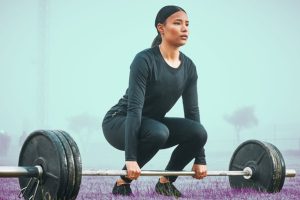The goal of almost every preparation phase in sport is to pack on size to increase strength, explosiveness and improve the athlete’s robustness. This phase of the preseason is typified by blocks of hypertrophy, strength and then power respectively. Hypertrophy (increasing the size of the muscles) is one of the foundations of improving strength, as more muscle fibres are laid down, allowing more total force to be generated by the muscle. However, hypertrophy means increasing weight, and this becomes quite the issue when the athlete competes in a sport where they need to maintain a certain weight to be competitive. Hence the combat sport puzzle.
So, how do we improve strength without increasing the athlete’s weight? There are two main ways we can achieve this; improving neuromuscular pathways – making the connection from the brain to the muscles as efficient as possible; and exposing the athlete to higher loads, while minimising total time spent lifting those weights. We’re going to discuss the latter.
When looking at strength versus hypertrophy training, there is one big difference – the time under tension. Hypertrophy training sees athletes lifting moderate-high loads for more reps and for longer total time. These aspects combined gives time under tension (total reps x time to complete each rep = time under tension for that set). More time under tension elicits a greater hypertrophic response from the body.
The best way to reduce time under tensions is to reduce the number of reps in each set and limit the part of the lift where the weight is moving the slowest – the eccentric phase. This phase is where most of the muscle microtears occur (leading to a hypertrophic response from the body and delayed onset muscle soreness (DOMS)), meaning athletes can improve strength, lift heavy weights, and not pack on weight simply by doing each rep a bit quicker.
A common aspect of strength training is dropping the weight after lifting it to its high point – thus minimising eccentric loading. Not only is this technique used by combat athletes (boxing, jiu jitsu etc.), but by ball sports teams who need their athletes to maintain strength and not be sore for games on the weekend.




